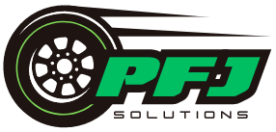Knowing when it’s time to change the tires on your vehicle is essential for safety and optimal performance. Here are some tips to help you determine when a tire change is due:
Check the Tread Depth:
Use a tread depth gauge or a penny test to measure the depth of your tire treads. Place a penny with Lincoln’s head facing down into the tread groove. If you can see the top of Lincoln’s head, your tires are worn out and need replacement.
Look for Tread Wear Indicators:
Most tires have built-in tread wear indicators, often in the form of raised bars or triangles within the tread grooves. If these indicators are flush with the tire’s surface, it’s time to replace the tire.
Monitor Uneven Wear:
Inspect your tires for uneven wear patterns. If one side of a tire has significantly less tread than the other or if you notice irregular wear patterns, it may be time to replace the tires. This can be an indication of alignment or suspension issues that need attention as well.
Consider Mileage:
Tires have a manufacturer-recommended mileage range, often specified in the owner’s manual. It’s a good idea to replace your tires within this range or sooner if they show signs of wear.
Age of the Tires:
Even if your tires have sufficient tread depth, they can still deteriorate due to age. Tires should typically be replaced every 6 to 10 years, regardless of their tread depth. Check the DOT (Department of Transportation) code on the sidewall to determine the manufacturing date.
Inspect for Damage:
Regularly check your tires for any visible damage, such as cuts, bulges, cracks, or punctures. These can compromise tire integrity and safety.
Pay Attention to Handling and Performance:
If you notice changes in your vehicle’s handling, such as reduced grip, increased noise, or a harsher ride, it may be due to tire wear. Address these issues promptly to maintain safety.
Seasonal Considerations:
Depending on your location and climate, you may need to change your tires seasonally. Winter tires should be used in colder months, and all-season or summer tires are appropriate for the rest of the year.
Maintain Proper Tire Pressure:
Regularly check and maintain the recommended tire pressure. Underinflated or overinflated tires can wear out faster and affect your vehicle’s handling.
Consult a Professional:
If you’re unsure about the condition of your tires, have a professional mechanic or tire expert inspect them. They can provide expert advice and recommendations.
Remember that maintaining good tires is crucial for safety, fuel efficiency, and overall vehicle performance. Regular inspections and proactive replacement are key to ensuring your tires are in optimal condition.
